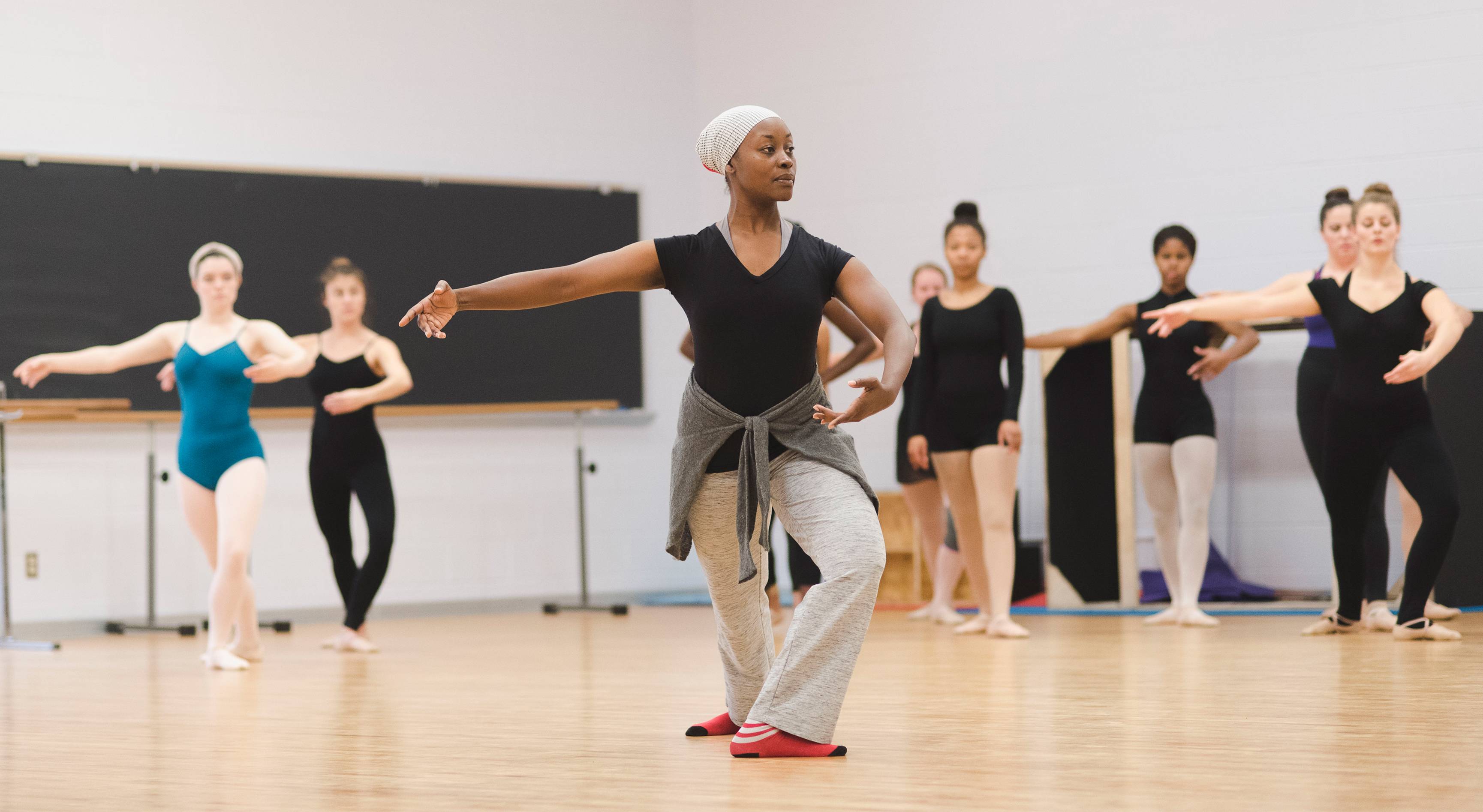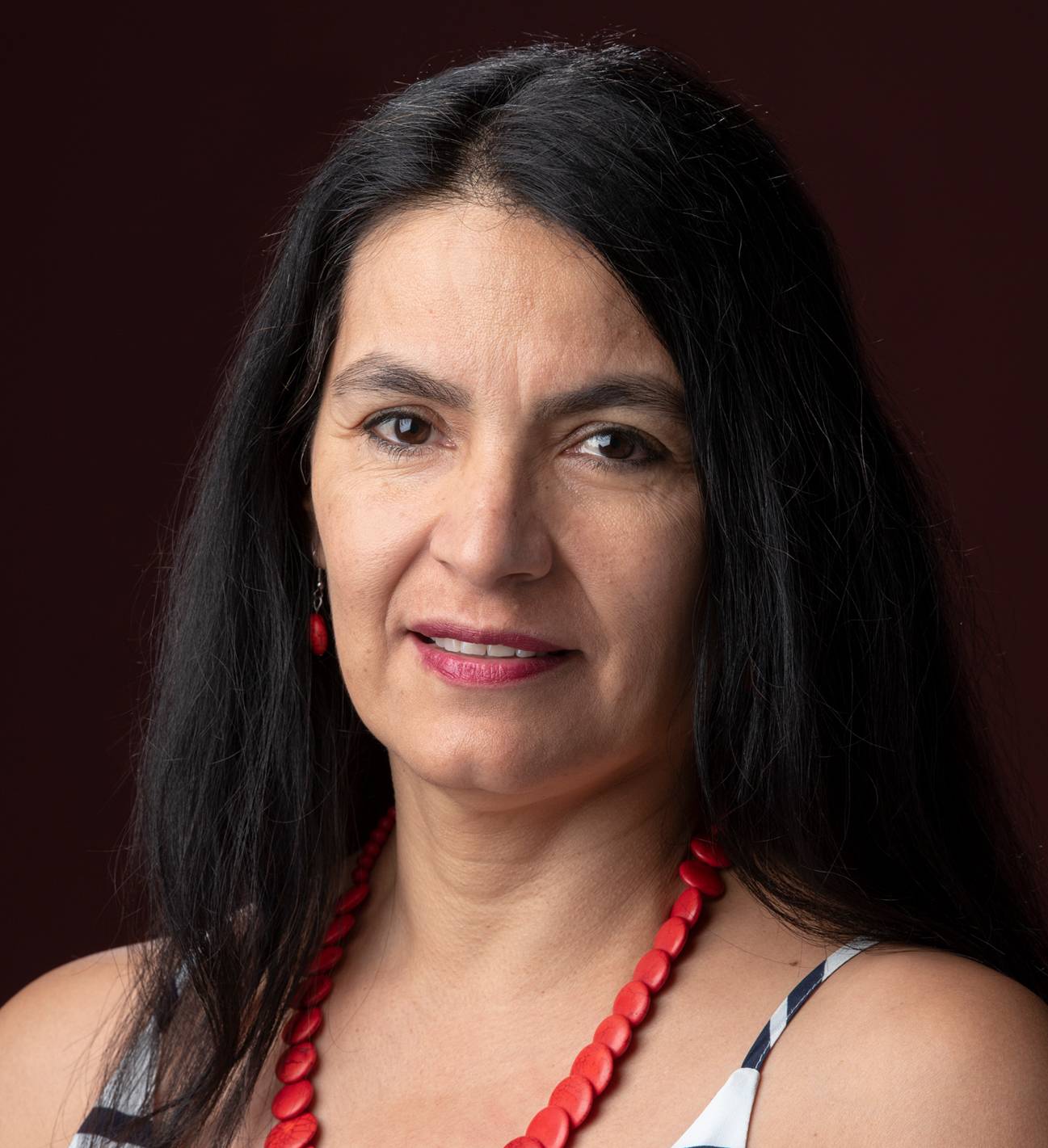Texas State's dance program ranks among the top in the nation and is a favorite with students and faculty
By Salwa Choucair

“Dancing is the loftiest, the most moving, the most beautiful of the arts, because it is no mere translation or abstraction from life; it is life itself.” — Havelock Ellis
They tell stories. They share secrets. They offer different perspectives. They do all this through movement. They are dancers.
For more than 50 years, Texas State University has offered a dance program to undergraduate students, and in 2020, it was ranked No. 1 in the state and No. 2 in the nation. It was exciting news for the close-knit faculty that continuously strives to make the program on-point for students entering today’s job market and professional dance industry.
“I think this recognition speaks a lot to our faculty’s ongoing efforts to update the curriculum, flesh it out and make it relevant with the dance profession as it changes. It also recognizes Texas State as having an established, solid program, and community. It is very exciting,” says Michelle Nance, professor and director of the Division of Dance.
Love in All Colors is about finding the acceptance and beauty that comes within all forms of love. It represents everything from interracial relationships to LGBTQIA+ relationships and the way the world tries to claim it as wrong. It is about finding the acceptance within yourself and others as well as encourage the shift in society to finally accept and recognize the beauty of love.
Choreographer: Lucy White

According to College Factual.com, the Texas State dance program is also the best value, with graduates earning top starting and mid-career salaries and the top school for veterans and non-traditional students interested in dance.
Senior dance major Emily Mendoza, 21, agrees with the online college ranking site. A former competitive gymnast and high school drill team captain, she chose Texas State to study physical therapy, but as a freshman, she felt like something was missing. Mendoza wasn’t enjoying school like she used to and decided to take a dance class.
“I didn’t even realize that Texas State had a dance program,” she says. “I started it blindly, and it was one of the best decisions I ever made. I’ve grown so much as a person and as a dancer. Everyone on the faculty and the students are welcoming and encouraging. You can really see yourself grow from the beginning of the semester to the end.”

Ana Baer Carrillo, professor of dance and head of the performance and choreography bachelor’s program, believes that what Mendoza discovered is exactly why the program is ranked so highly. It is the family atmosphere and the collaborative spirit.
“Our faculty is very close,” Baer Carrillo says. “We are a family, and our students perceive that. We are also very collaborative. While we are very diverse in our skill set, we help each other. We have experts in different movement practices such as modern jazz, ballet, hip hop, improvisation, pedagogy, choreography, dance history, kinesiology, Pilates, yoga, and conditioning. I think these factors make us a very competitive program along with the fact that we are very active in the professional arena.”
As a video choreographer, Baer Carrillo’s expertise is known as screen dance, a hybrid form of dance and video with dances created especially for the camera. It teaches students many transferable skills as do most dance forms.
Students who study dance in college learn more than just how to move their bodies. They learn anatomy and kinesiology, they learn how to understand nonverbal cues, and they become comfortable working with abstraction.
“They are used to understanding other points of view,” says Baer Carrillo. “When you hire a dancer, you are hiring a creative problem solver for your team.”
In general, graduates either take their shot at a professional dancing career as performers and choreographers, become dance teachers and drill team directors, or start their own dance company or school of dance. Other opportunities, however, arise because of their skills such as art critic, cinema production, and more.
While the university has offered a bachelor’s degree in dance since 1998, it was first a Bachelor of Science. Nance received her bachelor’s degree in Exercise Sports Science (with an emphasis in dance) at Texas State in 1995 and then an M.F.A. at the University of Colorado-Boulder in 2001.
APTUS is a group piece illustrating sensory movement and the adaptation of movement in different bodies. APTUS was created by the experience of being observed through an outer body experience.
Choreographer: Daniel Garcia
In 2003, Texas State’s dance program moved under the College of Fine Arts and Communication. By 2009 the degree became a B.F.A. Today, undergraduate students interested in majoring in dance have several options. They may choose dance with an emphasis in performance and choreography or dance with an emphasis in pedagogy, or they may choose to earn a bachelor of arts in dance.
Providing students with opportunities is at the heart of the program. These opportunities include performance ensembles and dance companies, partnerships in the San Marcos community to teach dance and to perform, study abroad, and world-renowned visiting choreographers.
“I love seeing young talent develop,” Baer Carrillo says. “Watching them grow stronger and more self-aware as they find their own voices and become part of the larger arts conversation, is the most satisfying endeavor.”
Mendoza, who started a mentoring program this year for students entering dance, will graduate this fall. While she has always planned to teach, she recently realized that she may first take a leap into the professional world of dancing. “I knew there was the dance professional world, but I didn’t think it was a possibility for me. Everyone’s encouragement, however, has helped me believe that I can do it.”
That’s exactly what the faculty hopes to achieve — to empower students to believe in themselves. “From self-initiative, discipline, and creativity to critical thinking and teamwork, students come back and tell us that they are glad they studied dance,” Nance says. ✪
Take Your Time revolves around the idea of time being looked at as a resource of scarcity. This is mainly a view on time and how many people will be able to relate on different levels. We often question, are we waisting time, are we giving time to the right things in life, and if we take a moment to be still, how our anxiety levels will fluctuate. Time is the only resource that cannot reproduce, and this piece will portray the worries and fears that correlate with time.
Choreographer: Arianna Alford